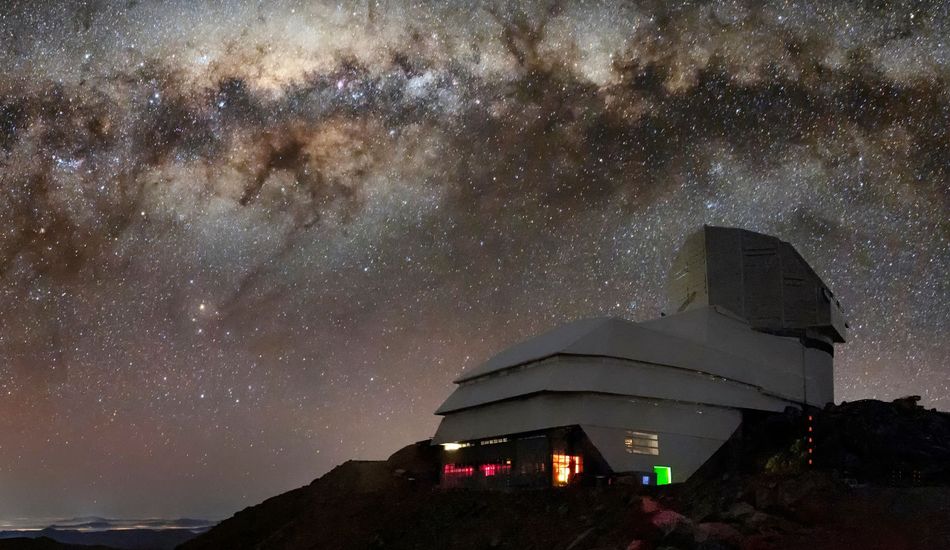
Vera C. Rubin Observatory: First Images Promise a New Era in Astronomy
After nearly a quarter-century of meticulous planning and construction, the Vera C. Rubin Observatory is poised to reveal its inaugural images. This momentous occasion marks the beginning of what promises to be a revolutionary era in astronomical observation. Picture this: perched high in the Chilean Andes, the observatory houses the largest digital camera ever crafted for astronomy, ready to capture the cosmos in breathtaking detail.
Overseen by the National Science Foundation (NSF) and the Department of Energy (DOE), the Rubin Observatory wields a 3.2-gigapixel camera, about the size of a car, to produce ultra-high-definition imagery and videos of the universe. The unveiling event promises to be a visual feast, as the NSF and DOE showcase the observatory's first images and screen high-resolution time-lapse "movies" of the visible sky. This is more than just a technological marvel; it's a gateway to understanding some of the universe's most profound mysteries.
For those eager to witness this historic event, a livestream will be available, allowing enthusiasts worldwide to participate. Alternatively, numerous museums, universities, and planetariums are hosting in-person watch parties. Consider it a global celebration of human curiosity and ingenuity.
A Legacy of Discovery
Conceived over two decades ago, the Rubin Observatory is now on the cusp of launching its ambitious science operations. Later this year, the observatory will initiate the Legacy Survey of Space and Time (LSST), an unprecedented decade-long survey of the night sky. This endeavor will generate an astounding 60 petabytes of data, offering scientists a treasure trove of information to probe the natures of dark matter and dark energy, catalog the solar system with greater precision, observe the ever-changing sky, and gain deeper insights into the structure and function of our own Milky Way galaxy.
Using its 27.6-foot (8.4-meter) Simonyi Survey telescope, featuring a unique three-mirror design that includes the largest convex mirror ever created, the Rubin Observatory will automatically observe the cosmos. Each 30-second exposure will encompass an area approximately 45 times the size of the full moon. The LSST camera will capture wide-field images, stitching them together to create a comprehensive view of the southern sky every three nights. Imagine the sheer volume of data and the potential for groundbreaking discoveries.
Moreover, dedicated computer facilities will process Rubin's data in real-time, issuing global alerts of changes in the sky within minutes of detection. The observatory's findings will be compiled into a massive archive, significantly expanding the data available to scientists worldwide. In essence, the Rubin Observatory is not just building a telescope; it's constructing a vast, dynamic map of the universe.
Unveiling the Unknown
A team led by astronomer Meg Schwamb at Queen's University Belfast estimates that the Rubin Observatory could potentially triple the number of known near-Earth objects (NEOs), from roughly 38,000 to an impressive 127,000. Additionally, it could detect ten times more trans-Neptunian objects than currently cataloged and provide detailed observations of over 5 million main-belt asteroids—a significant leap from the current 1.4 million. These predictions, along with the software developed to make them (Sorcha), underscore the observatory's transformative potential.
According to Mario Juric, an astronomer at the University of Washington, this wealth of data will allow us to update textbooks on solar system formation and substantially improve our ability to identify and potentially deflect asteroids that could pose a threat to Earth. It's a compelling blend of fundamental science and practical application.
Carrying on a Legacy
The Rubin Observatory stands as a testament to the legacy of its namesake, astronomer Vera Rubin, whose groundbreaking work helped prove the existence of dark matter. Just as Vera Rubin revolutionized our understanding of the cosmos, the Rubin Observatory promises to usher in a new era of exploration and discovery. It's a fitting tribute to a pioneer and a bold step forward in our quest to understand the universe.
With its state-of-the-art capabilities, the Rubin Observatory's first images are poised to captivate and inspire. This unveiling is just the beginning of an ambitious mission to map the cosmos in unprecedented detail, unlocking new insights into the universe's most guarded secrets. Prepare to be amazed.
Source: Gizmodo